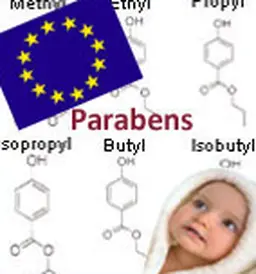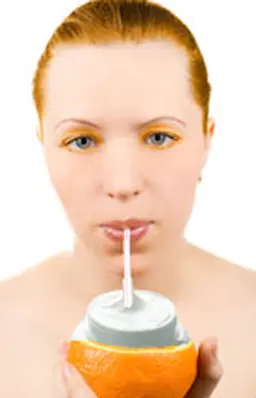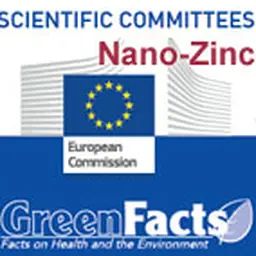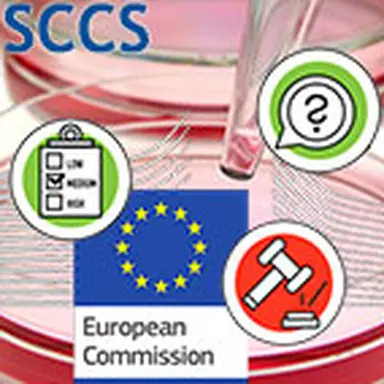
How is the safety of cosmetic ingredients assessed? Which process is involved in the decision to authorize or prohibit their placing on the market? How are the specific rules to restrict their use defined? For the sake of transparency, the European Commission has published a document to answer all these questions and inform consumers.
The document was posted as an infographic on the European Commission’s website.
Question to the Committee
 Sound scientific advice is vital to ensure a high level of health and environmental protection. Before making a legislative proposal (such as the market authorisation of a certain ingredient), the European Commission asks the Scientific Committees to assess the potential risks; namely the probability and the severity of an adverse effect, in relation to the hazard and to the exposure.
Sound scientific advice is vital to ensure a high level of health and environmental protection. Before making a legislative proposal (such as the market authorisation of a certain ingredient), the European Commission asks the Scientific Committees to assess the potential risks; namely the probability and the severity of an adverse effect, in relation to the hazard and to the exposure.
|
Example: Scientific Committee on Consumer Safety (SCCS) – Pigment Red 57 used in hair dyes
|
Hazard identification
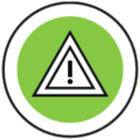 Hazard identification defines which chemicals, biological or physical agents are potentially harmful to human health or the environment. It can be based on the results of
in vivo
tests,
in vitro
tests,
in silico
methods, epidemiological studies, clinical studies, case reports and data from post-marketing surveillance.
Hazard identification defines which chemicals, biological or physical agents are potentially harmful to human health or the environment. It can be based on the results of
in vivo
tests,
in vitro
tests,
in silico
methods, epidemiological studies, clinical studies, case reports and data from post-marketing surveillance.
|
Example
|
Exposure assessment
 Exposure assessment defines the human exposure levels. It determines or estimates how, how much and how often the population is exposed to a substance. It also defines the source (drinking water, diet, consumer products, environment) and the route of intake among specific consumer groups like children, vulnerable groups, adults, etc.
Exposure assessment defines the human exposure levels. It determines or estimates how, how much and how often the population is exposed to a substance. It also defines the source (drinking water, diet, consumer products, environment) and the route of intake among specific consumer groups like children, vulnerable groups, adults, etc.
|
Example
|
Dose-response assessment
 The dose-response assessment describes the relationship between the extent of an adverse effect in an organism and the different concentrations or doses of a chemical. If there is a threshold amount below which a substance is safe and above which it is not, then the threshold amount is taken as the highest dose that can be taken without any observable adverse effects.
The dose-response assessment describes the relationship between the extent of an adverse effect in an organism and the different concentrations or doses of a chemical. If there is a threshold amount below which a substance is safe and above which it is not, then the threshold amount is taken as the highest dose that can be taken without any observable adverse effects.
|
Example
|
Risk characterisation
 Risk characterisation is the combination of information on hazard, exposure, and dose response to provide an estimate of the probability that identified specific adverse effects will occur in exposed people.
Risk characterisation is the combination of information on hazard, exposure, and dose response to provide an estimate of the probability that identified specific adverse effects will occur in exposed people.
|
Example
|
The Scientific Committee's Opinion
 A full risk assessment is made up, based on the available scientific evidence and undertaken in an independent, objective and transparent manner. This assessment serves as a basis for the next steps of the risk management and policy making processes.
A full risk assessment is made up, based on the available scientific evidence and undertaken in an independent, objective and transparent manner. This assessment serves as a basis for the next steps of the risk management and policy making processes.
|
Example
|
Risk management by the Commission and the legislators
 •
Economical, social, political aspects
•
Economical, social, political aspects
Risk management means the process of weighing policy alternatives in consultation with interested parties, considering risk assessment and other legitimate factors, and, if need be, selecting appropriate prevention and control options.
•
Proportionality and precautionary principle
According to the precautionary principle, if a given policy or action might cause harm to the public or the environment and if there is still no scientific consensus on the issue, the policy or action in question should not be pursued. Once more scientific information becomes available, the situation should be reviewed. Under the proportionality rule, the action of the EU must be limited to what is necessary to achieve the objectives.
Policy proposal
 Considering the risk assessment and all other relevant aspects, the European Commission makes a legislative proposal, for instance to authorise or to forbid a certain substance, to define exposure limits or to set prevention and risk reduction measures.
Considering the risk assessment and all other relevant aspects, the European Commission makes a legislative proposal, for instance to authorise or to forbid a certain substance, to define exposure limits or to set prevention and risk reduction measures.
Legislation
 The legislative proposals are discussed and adopted by the EU legislators: the European Parliament and the Council of the EU. For tertiary legislation, adoption follows Comitology and scrutiny procedures.
The legislative proposals are discussed and adopted by the EU legislators: the European Parliament and the Council of the EU. For tertiary legislation, adoption follows Comitology and scrutiny procedures.
|
Example
|
Source
•
Risk assessment by the Scientific Committees of the European Commission
, European Union, 2017

